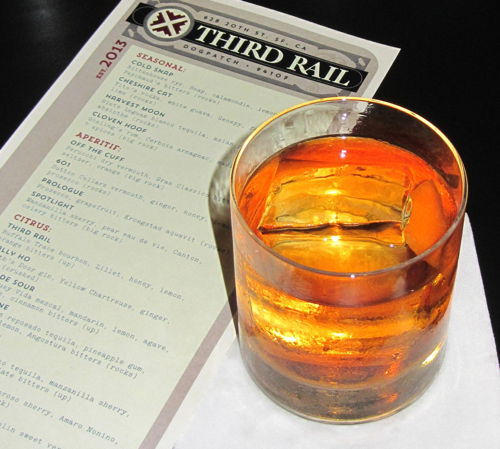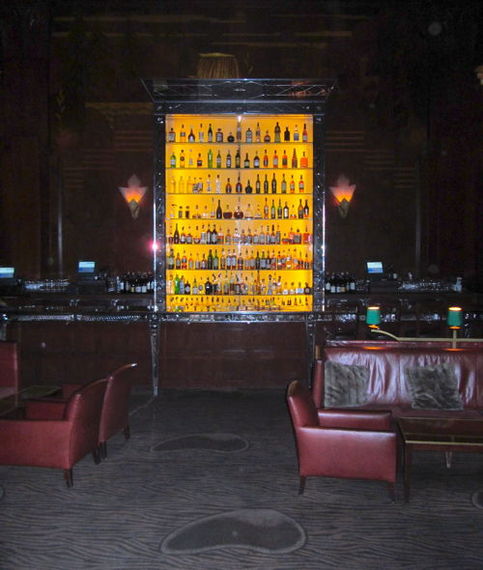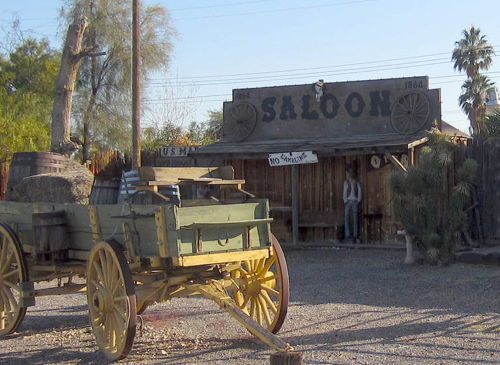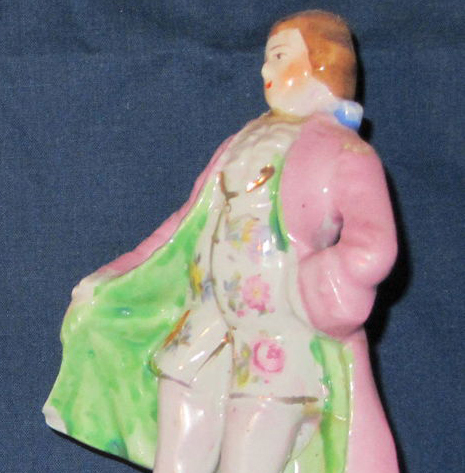During a pre-opening party last week at San Francisco's forthcoming Third Rail Bar, I was served a butt-kicking cocktail whose main ingredient was applejack.
Then I sipped a jalapeño-spiked drink under Art Deco lamps at the Clift Hotel's Redwood Room, all of whose glorious cherry-molasses walls were paneled in 1933 with planks sawn from the same 2,000-year-old redwood tree.
Later, I was urged via podcast by celebrity mixologist Pamela Wiznitzer to whip Maker's Mark Kentucky bourbon into my French-toast eggs on post-Thanksgiving Friday.
All this got me thinking about another version of history: e.g. U.S. history through its alcohol, with all this distilling, mixing and drinking comprising a proud American industry that has outlasted many of its counterparts: coal, say, and whale oil and cars.
Just as it has done with yogurt and deities, this nation has transformed alcoholic beverages invented elsewhere into diehard American classics. Neolithic barley beer, mentioned in the Epic of Gilgamesh, became Coors, Bitterama and Samuel Adams' barrel-aged Utopias, an uncarbonated dark 28 percent-ABV brewski meant to be sipped from a snifter à la cognac, and also available as a cigar infusion. Ancient Greek and Chinese wine became Fat Bastard Merlot and Franzia that squirts out of a box. The Boston Tea Party wasn't America's only tax revolt: Ponder the Whiskey Rebellion of 1791, in which Pennsylvania distillers battled George Washington's troops. At that time, whiskey was considered America's best cure for yellow fever. Pittsburgh's Wigle Whiskey is named for whiskey rebel Philip Wigle, sentenced to hang for his role in the scuffle but then pardoned by G-Wash himself -- who was also an amateur distiller.
We now have homegrown American gins, sakes and absinthes. This is the magic land of moonshine, Jello shots and Four Loko. The aforementioned applejack, an apple-based liquor popular during the Colonial years, was born on American soil -- which makes it the spirituous equivalent of Mormonism. Granted, alcohol can kill. Granted, the imprecation "Drink responsibly" is impossible for some. But this industry has employed millions, so there's that.
Wanting to learn more, I interviewed Fred Minnick, whose brand-new book Whiskey Women: The Untold Story of How Women Saved Bourbon, Scotch, and Irish Whiskey unveils a clear brown past in which ordinary 18th-century American housewives distilled whiskey at home and "even though he preferred wine for himself, Thomas Jefferson purchased whiskey for his slaves." Much Civil War-era whiskey, Minnick's book reveals, included such horrifying ingredients as tobacco, filthy river water and rattlesnake heads.
"I'm the first person to write a book on the woman's role throughout whiskey history," Minnick told me. "I took this as an awesome responsibility to find important women and to smash the same damn sexist generalization played throughout marketing -- that whiskey is a man's drink. I dug and dug at archives, libraries, old newspapers, arrest records, court documents and medieval legislation that showed women were smack in the middle of the illegal whiskey trade and were even targeted by governments for making or bootlegging whiskey, poteen and moonshine."
If he could meet one of the long-gone "whiskey women" covered in his book, it would be Gertrude "Cleo" Lythgoe, who during Prohibition was dubbed "Queen of the Bootleggers."
"We've all heard of famous bootlegger/gangsters such as Al Capone, George Remus and Bill McCoy, but Lythgoe was supplying most of them," Minnick said. "She had a legitimate wholesale liquor license in the Bahamas, so she legally brought whiskey to the island and then illegally shipped it to the United States. The amazing thing about Lythgoe was that she carried only premium whiskey.
"She was this prolific, beautiful figure who became an icon in the early part of Prohibition." Strangers sent Lythgoe letters begging her to marry them. She was allegedly worth millons when she retired in 1925.
Minnick also admires Marjorie Samuels, who in the mid-20th century married into the Kentucky family that had been distilling Maker's Mark for nearly 200 years.
"Marjorie Samuels' impact on the future of liquor packaging is absolutely fascinating," Minnick said. "When she was experimenting with waxes" to seal the bottle-tops of "the new bourbon her husband planned, Samuels could have gone with a gray or brown wax, but she was going for a red wax so it would pop on the liquor shelf. At that time, in the 1950s, a typical liquor shelf consisted of a bunch of labels depicting old men, dogs and doily-looking designs. Maker's Mark stood out on the liquor shelf because of the bottle's curvy design and bright red wax. This bottle absolutely changed packaging and has been imitated many times over."
Ponder too the Bottled-in-Bond Act of 1897, which Minnick deems "incredibly important to ensuring consumer protection against bad whiskey. At the time, whiskey was mostly sold by the barrel and saloons would add prune juice, water and lethal additives to make barrels last longer. The Bottled-in-Bond Act became the first Congressional consumer protective measure and it basically stated that Bottled-in-Bond labeled products were made in one distillation season by one distiller and stored in a federally bonded warehouse under U.S. government supervision for at least four years and bottled at 100 proof. This insured the whiskey's purity. Today, there are only sixteen Bottled-in-Bond bourbons left, but they still exist."
Minnick is also intrigued by the post-Prohibition movement to ban alcohol ads, in which female members of the Women's Association of Allied Beverage Industries battled the ad-banning activists.
"In 1958, the mood of the country was changing toward alcohol advertising. Drunken driving was up and doctors were starting to blame alcohol abuse for many maladies," which fueled the ad-banning activists. "A young Senator Strom Thurmond was gunning to ban alcohol advertising. WAABI President Grace Ellis testified before Congress and put Thurmond in his place, basically making a fool out of the senator. I believe Ellis' testimony helped put the final nails in the coffin against these ban-alcohol-advertising movements."
Thus I bring you Absolut Bling Bling and Drink, Drink, Drink Tyrolia.
"That said, liquor has always faced more scrutiny than beer. Only recently, the FTC said liquor advertising should enjoy the same rights as beer and wine advertising. That's why you're now seeing more whiskey advertisements than ever before," Minnick said.
So even in this year of fear and perplexity, we have much to be thankful for. Any nation that could figure out how to transform corn into mint juleps won't go down without a fight.
Fred Minnick image courtesy of Fred Minnick. Maker's Mark image courtesy of Maker's Mark. All other photographs are by Kristan Lawson. All images used with permission.






